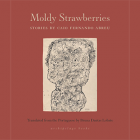The Forming of a Self in Claudia Durastanti’s Strangers I Know

Strangers I Know
Claudia Durastanti
Riverhead Books | January 25, 2022
Strangers I Know by Claudia Durastanti, her first novel to be translated from Italian into English, does not fit squarely into any one category. The book could be considered autofiction: the narrator shares similarities with Durastanti, such as her name, being raised by deaf parents with whom she does not share a language and moving countries. At times, the book reads like essays, Durastanti delivering pockets of facts and philosophizing. In addition, Strangers I Know is nonlinear, not chronological and without plot. This resistance to categorization allows Durastanti to write about her parents, languages, and migrations, moving from one theme to another sometimes in the span of a paragraph. Holding this movement together is the narrator Claudia’s unrelenting inquiry into how a self is formed.
Early in the work, Claudia observes, “The story of a family is more like a map than a novel, and an autobiography is the summation of all the geologic ages you’ve passed through.” Maps represent the motion of Claudia and her family as they immigrate from Italy to America and back again, while “geologic ages” are solid and can be visualized by strata in rocks, formed by layers of accumulation. And it is this concept of layers that helps the reader understand Durastanti’s project in Strangers I Know: revealing the self as a series of accumulations.
For Claudia, the first layer consists of her parents, both deaf and eccentric. Appropriately, “Family” is the first section of Strangers I Know, and it begins with two different versions of how Claudia’s father and mother met. Her mother says that she saved her father from jumping off the Sisto Bridge in Rome; Claudia’s father says that he saved her mother from a violent robbery near Trastevere Station. The two versions show us how we actively construct memory, the stories we tell about ourselves: both parents believed they saved the other, and in a way they did, despite the marriage ending in divorce. They two have similar thoughts about living with a disability, “not interested in facing disability with bravery or dignity, but with recklessness and oblivion.” This approach bonds them, and in turn, serves as a foundation of Claudia’s sense of self, which she examines in the following sections of the book.
After the story of her parents’ relationship, Claudia chronicles her own childhood, adolescence, and youth through the three countries she lived in—America, Italy, and England. In addition to the foreignness that Claudia experiences as she moves from America to Italy as a child, she focuses on how her parents’ deafness affects her life, from how she is treated in school in Basilicata to how she learned to speak. Claudia’s parents do not use sign language with each other or their family. To speak to them, she relies on gestures and their ability to lip-read. Her older brother teaches her the nuances of English and Italian. As the “daughter of the mute” (as her mother is mislabeled in their Lucani community), Claudia’s family’s lexicon shaped her into someone whose curiosity and expression centers around words. Indeed, the language in Strangers I Know, wonderfully translated by Elizabeth Harris, is precise: “Language is a technology that reveals the world; words are flames that we hold close to the inexpressible, so it might appear—as though reality were written in invisible ink—without words.” For Durastanti, language has the power to perform an excavation of the self in the attempt to bring the inexpressible into understanding.
By the end of the book, it becomes clear that part of what Durastanti has realized is the impossibility of keeping the strata of the self solid and separate. Claudia’s parents, their disability, her peripatetic childhood, her family’s poverty, and social class are constantly forming and reforming who she believes herself to be, and she writes to capture this motion, becoming less of a stranger to herself, and others. The book’s title highlights the importance of feeling known by others: Strangers I Know is translated from the Italian title La Straniera, and a definition is provided as an epigraph in the English version: “straniera, 1. foreigner; alien 2. stranger; outsider 3. enemy.” The main difference between the two titles is that in the Italian version the foreigner, stranger, enemy is singular and female. There is one stranger, Claudia herself. The English version doesn’t exclude the self as stranger, but at the same time it points to more relationships—parents, lovers, family, friends, neighbors—that help Claudia better understand herself.
Strangers I Know is a flame held up to the inexpressible self.



